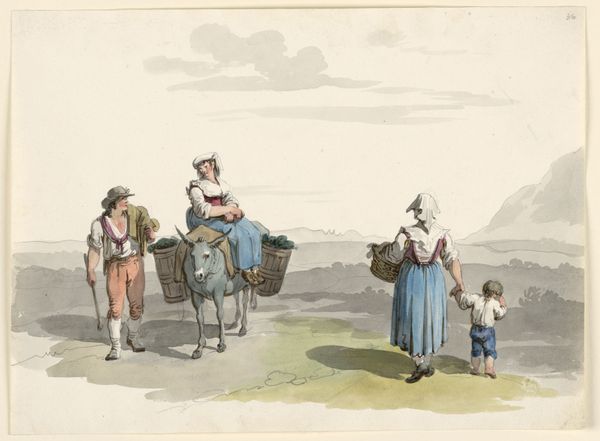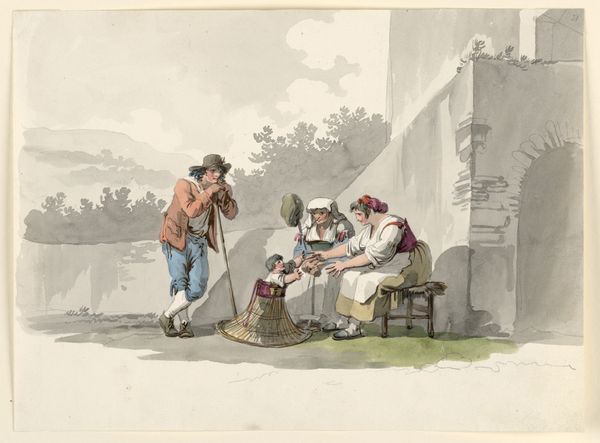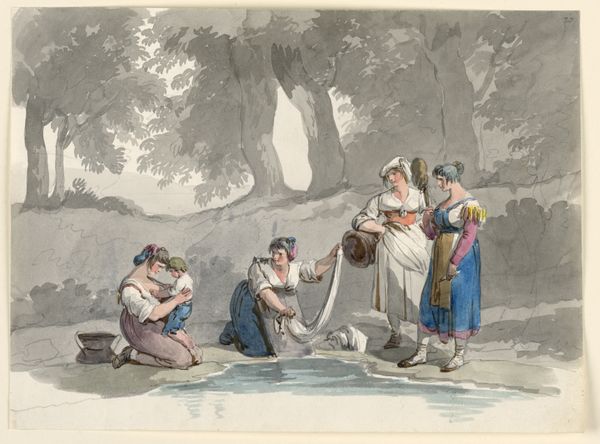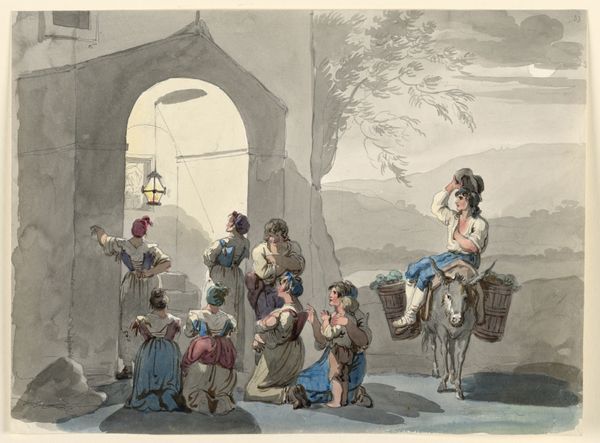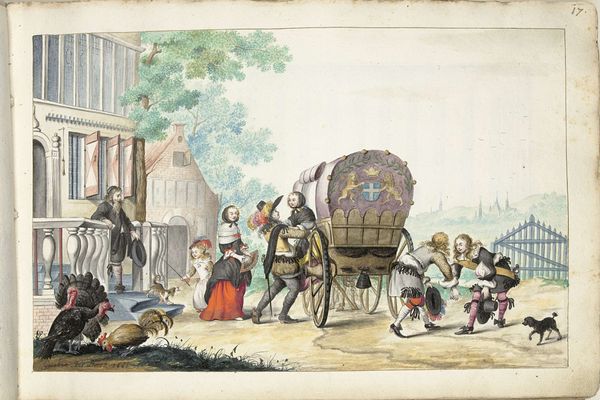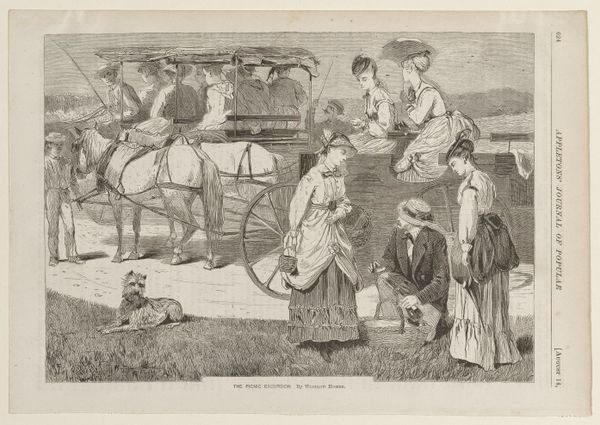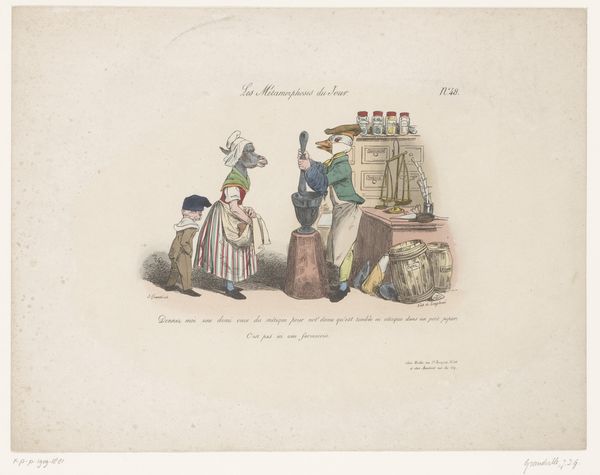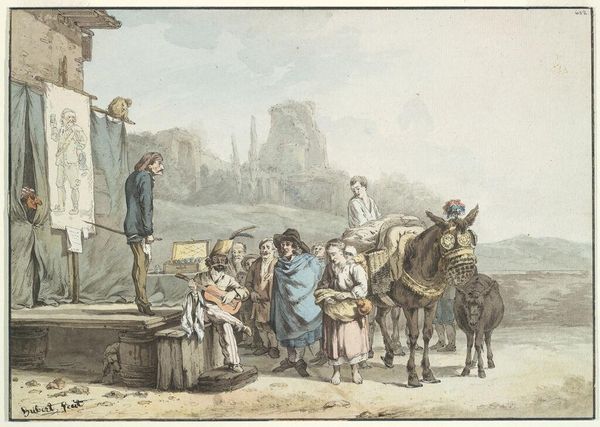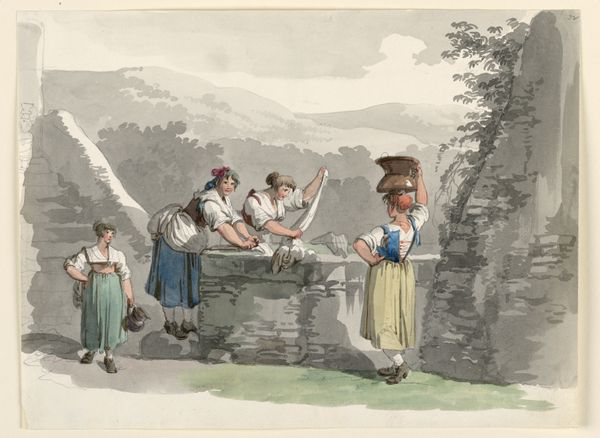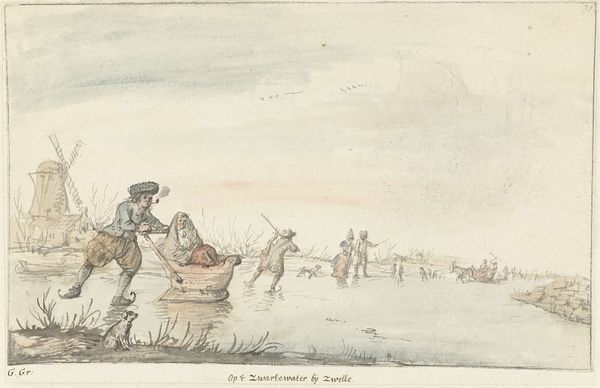
drawing, plein-air, watercolor
#
drawing
#
narrative-art
#
plein-air
#
landscape
#
figuration
#
watercolor
#
romanticism
#
watercolour illustration
#
genre-painting
Copyright: Public domain
Curator: This is Bartolomeo Pinelli’s “Rest During the Vintage,” created in 1808 using watercolor. It's currently held at the Cooper Hewitt. I’m struck by how casually it depicts labor. The workers aren’t idealized, they seem pretty tired and the artist included the donkey who has to carry the load of what appears to be grapes. What grabs you about this piece? Editor: The casualness, actually. There’s a stillness in their poses; even the donkey looks weary. The way the barrel anchors the composition is so clever, as a symbol of production. What do you see in the handling of the materials, the watercolour itself? Curator: Right, that barrel... I think the visible brushstrokes in the watercolor application signal a certain approach to labour. Consider the speedy, repetitive task of harvesting, mirrored in Pinelli's own quick application of paint. It connects to craft in the way he shows how art and everyday work intertwine. Editor: So you're saying the medium is part of the message? It's not just a landscape scene. The watercolor connects to the broader industry of winemaking. Curator: Exactly. And notice the plainness of their clothing – no adornment, strictly functional. Think about the division of labor, the artist's labor versus the workers'. And who consumes the final product, the wine, and ultimately, this very image? Editor: It puts a new spin on it when we think about where the art comes from. The means of production are part of what’s being represented. Curator: Yes. By focusing on the materials and processes involved, we can appreciate not just the aesthetic but the entire socio-economic system surrounding "Rest During the Vintage." It goes beyond simple Romanticism, doesn't it? Editor: Definitely. Thinking about the work – the labourers, Pinelli’s, and even our own – helps to unravel what we see, and I love how you explained it through the watercolor itself!
Comments
No comments
Be the first to comment and join the conversation on the ultimate creative platform.
